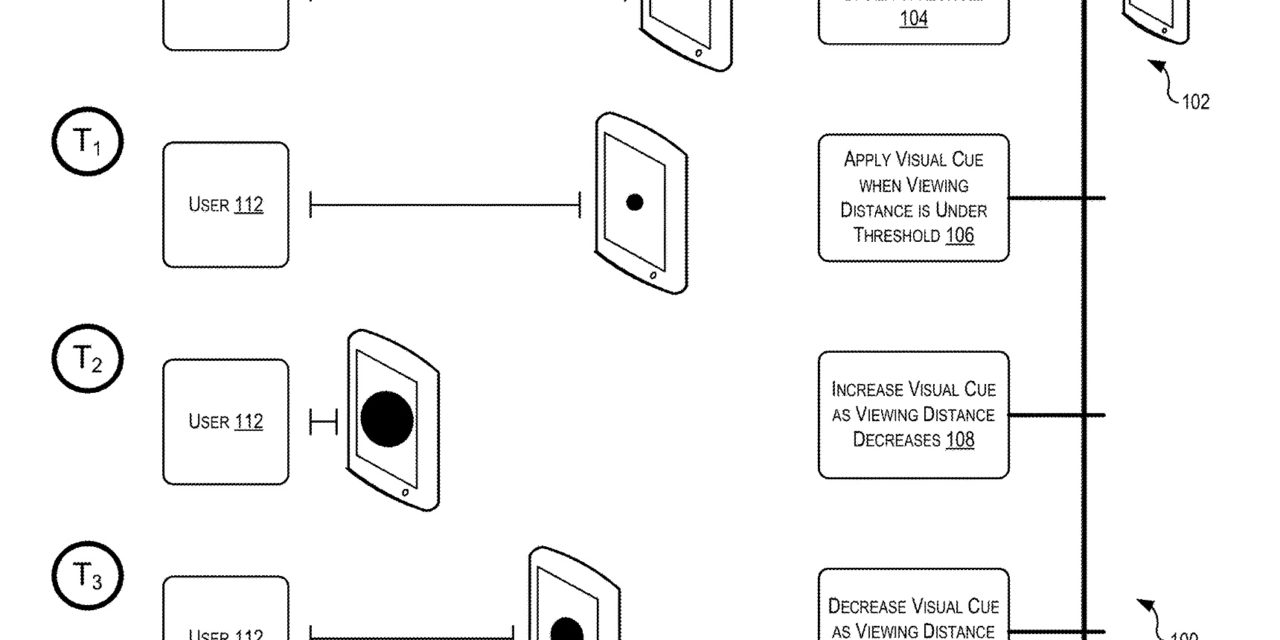Apple has been granted a patent (number US 11681415 B2) for “near-viewing notification techniques” to help reduce eye strain when using iPhones and iPads.
About the patent
Certain activities, when performed for an extended period of time, may cause eye strain. As a result of and/or in an attempt to alleviate such eye strain, people may naturally reduce the distance between their eyes and whatever it is they are focusing on.
For example, when people read for an extended period of time, they may gradually move the reading material closer to their eyes over time. This may be to account for their eyes becoming more fatigued over time. This same phenomenon has been observed in users who view screens of electronic devices, which have become so ubiquitous and useful, that people tend to utilize them throughout the day.
For example, electronic devices can be used for work (e.g., reading/responding to emails, working on/reviewing documents, etc.) as well for personal enjoyment (e.g., reading, watching video content, playing games, etc.). However, prolonged use can be hard on the eyes.
Apple’s idea is for the front-facing camera of an iPhone or iPad to take a face detection sample every few seconds. The near-viewing control engine may use these samples to identify a user’s face (e.g., within a bounding box) and determine a distance between the user’s face and the electronic device (e.g., an initial distance).
If the near-viewing control engine determines that a first criterion is satisfied (e.g., the user’s face is too close to the electronic device based on a comparison of the distance to a predefined viewing distance threshold), the near-viewing control engine may tell the user to move the device or iPhone further from his eyes. Also, if the near-viewing control engine notes that the user has been using the device for a long-time, it will suggest taking a break.
Summary of the patent
Here’s Apple’s abstract of the patent: “Techniques are provided for implementing near-view notification techniques. In some instances, a viewing distance with respect to a display screen of an electronic device may be determined. In accordance with a determination that the viewing distance is above a distance threshold, content may be presented on the display screen. In accordance with a determination that the viewing distance is under a distance threshold, until the viewing distance returns to being above the distance threshold, a visual notification may be displayed. The visual notification may disrupt the content presented on the display screen.”
Article provided with permission from AppleWorld.Today





